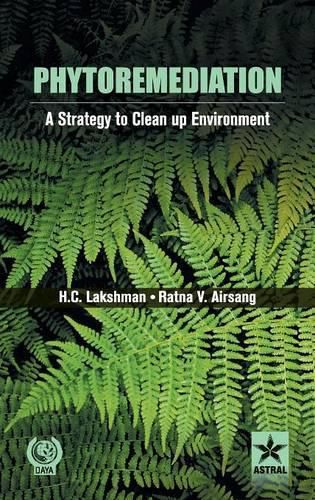Readings Newsletter
Become a Readings Member to make your shopping experience even easier.
Sign in or sign up for free!
You’re not far away from qualifying for FREE standard shipping within Australia
You’ve qualified for FREE standard shipping within Australia
The cart is loading…






Phytoremediation is described as a natural process carried out by plants and trees in the cleaning up and stabilization of contaminated soils, sediments and ground water or it is described as the use of vegetation for in situ treatment of contaminated soils, sediments and water. Plants have shown the capacity to withstand relatively high concentration of organic chemicals without toxic effects and they can absorb and convert chemicals quickly to less toxic metabolites. Currently, conventional remediation methods of Heavy Metals (HM) contaminated soils are expensive and environmentally destructive. Scientists all over have been in search of some innovative, eco-friendly and low cost alternative technologies. One of them is the phytoremediation, which include the use of plants to clean and cure the environment and plants have been known for their property to absorb, accumulate and detoxify the impurities present in the soil, water and air through various physical, chemical and biological processes. Phytoremediation, a fast-emerging new technology for removal of toxic HMs, is cost-effective, non-intrusive and aesthetically pleasing. It exploits the ability of selected plants to remediate pollutants from contaminated sites. This book includes chapters with the valuable information about curing of soil problems (cleansing tool) in various contaminated sites by plants, recent biological treatment technologies, role of rhizosphere and microbes, role of AM fungi, Enzymes used by plants to detoxify organic compounds, Advantages, Disadvantages and limitations of Phytoremediation, Natural plant resources for Phytoremediation, Reforestation and Plant Disposal Considerations. This textbook provides sufficient basic information to environmental scientists, academicians, researchers, post graduates, graduates and who are working in the area of phytoremediation.
$9.00 standard shipping within Australia
FREE standard shipping within Australia for orders over $100.00
Express & International shipping calculated at checkout
Phytoremediation is described as a natural process carried out by plants and trees in the cleaning up and stabilization of contaminated soils, sediments and ground water or it is described as the use of vegetation for in situ treatment of contaminated soils, sediments and water. Plants have shown the capacity to withstand relatively high concentration of organic chemicals without toxic effects and they can absorb and convert chemicals quickly to less toxic metabolites. Currently, conventional remediation methods of Heavy Metals (HM) contaminated soils are expensive and environmentally destructive. Scientists all over have been in search of some innovative, eco-friendly and low cost alternative technologies. One of them is the phytoremediation, which include the use of plants to clean and cure the environment and plants have been known for their property to absorb, accumulate and detoxify the impurities present in the soil, water and air through various physical, chemical and biological processes. Phytoremediation, a fast-emerging new technology for removal of toxic HMs, is cost-effective, non-intrusive and aesthetically pleasing. It exploits the ability of selected plants to remediate pollutants from contaminated sites. This book includes chapters with the valuable information about curing of soil problems (cleansing tool) in various contaminated sites by plants, recent biological treatment technologies, role of rhizosphere and microbes, role of AM fungi, Enzymes used by plants to detoxify organic compounds, Advantages, Disadvantages and limitations of Phytoremediation, Natural plant resources for Phytoremediation, Reforestation and Plant Disposal Considerations. This textbook provides sufficient basic information to environmental scientists, academicians, researchers, post graduates, graduates and who are working in the area of phytoremediation.